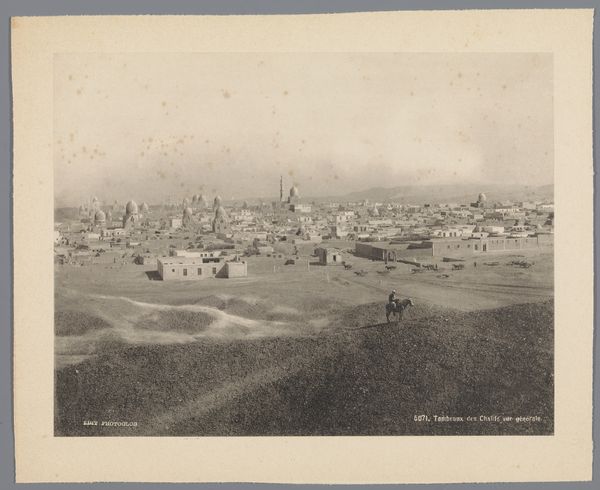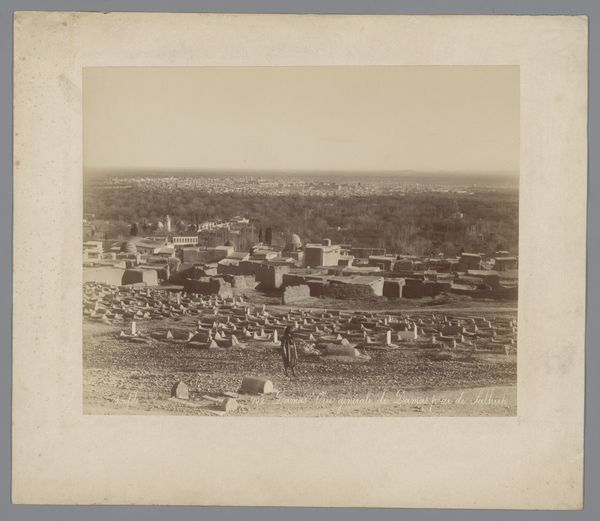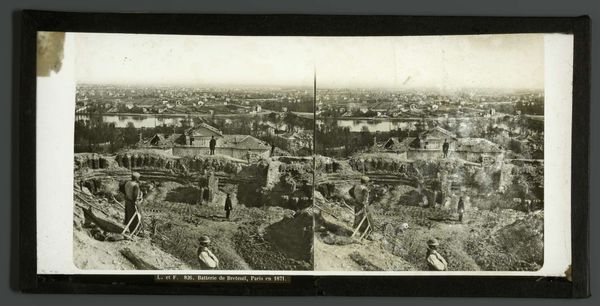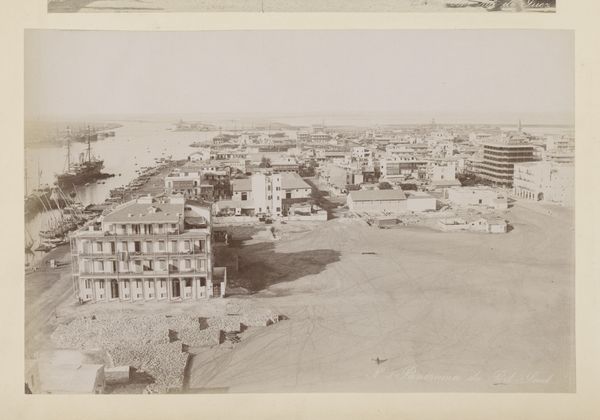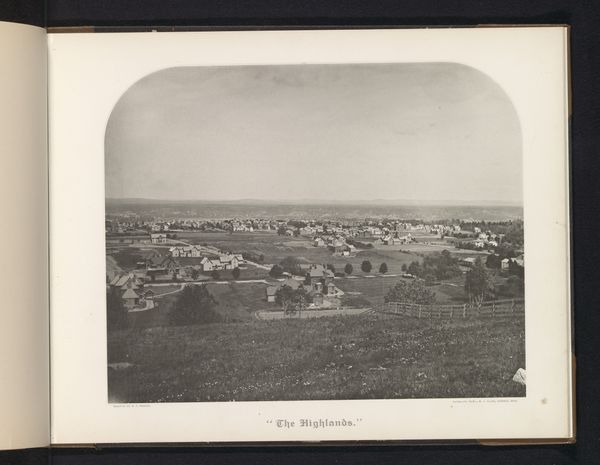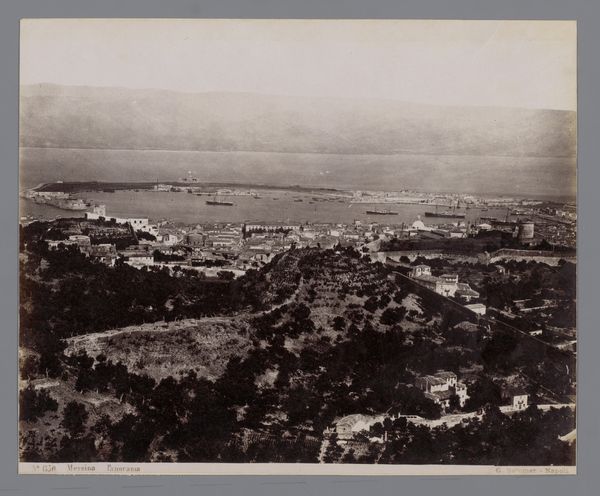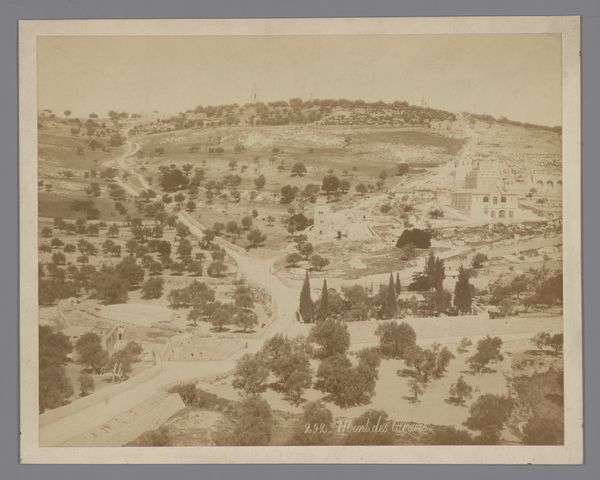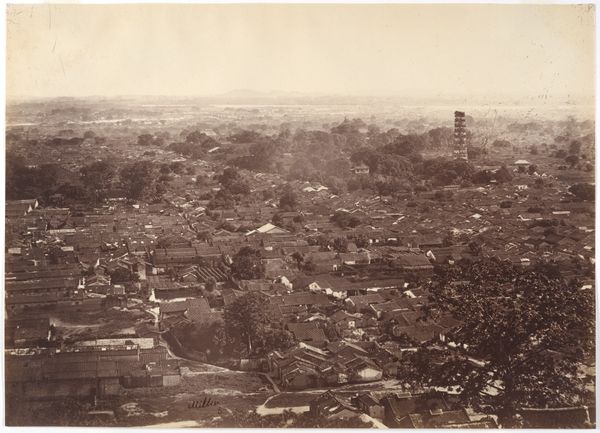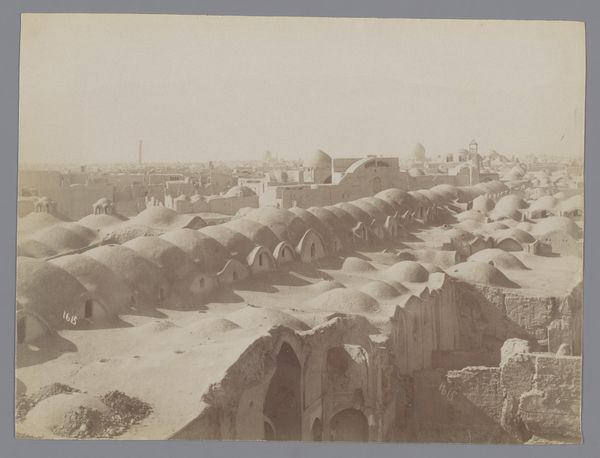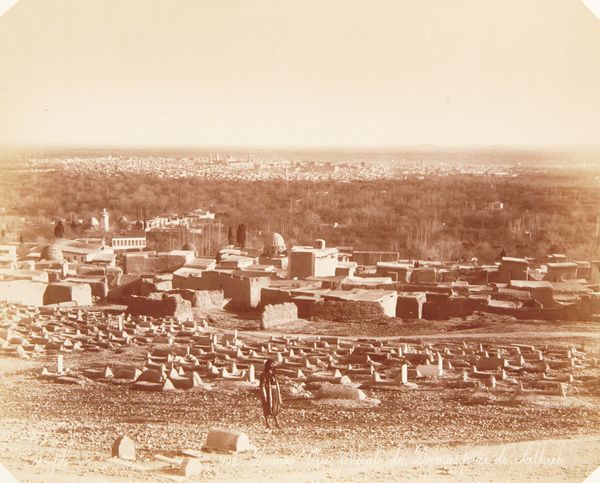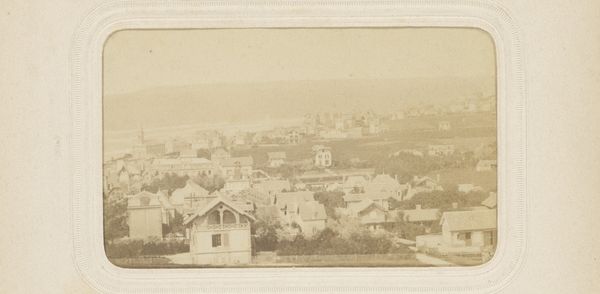
photography, gelatin-silver-print
#
landscape
#
photography
#
gelatin-silver-print
#
cityscape
#
islamic-art
Dimensions: height 218 mm, width 277 mm
Copyright: Rijks Museum: Open Domain
Editor: Here we have a gelatin silver print, dating from around 1870 to 1900, titled "View of the Cemetery of Assiut." The photographer is unknown, listed only as Peridis. It strikes me as a surprisingly intimate, even domestic, depiction of a space dedicated to the deceased. What stands out to you? Curator: It’s interesting you say “intimate.” As a historian, I immediately consider the gaze of the photographer, likely a European, capturing this scene in Egypt during a period of intense colonial interest. The "intimacy" you perceive could be a projection of the West’s fascination with and, perhaps, misinterpretation of the "Orient." Editor: So, it's less about actual intimacy and more about a projected fantasy? Curator: Precisely. The composition, with the cemetery presented almost as a sprawling urban landscape, raises questions about the politics of representation. How does this image participate in the larger project of constructing an image of Egypt for a Western audience? What’s emphasized? What's left out? Editor: That’s a perspective I hadn't considered. I was initially drawn to the repetitive patterns of the architecture. Are those fortifications, or simply decorative? Curator: That interplay between defense and ornamentation is fascinating and quite common. But I think it important to ask: What power dynamics are at play when a Western photographer chooses to frame a cemetery in this way? Is it about appreciating Islamic art, or about something else? Editor: So the photograph might reflect something less appreciative than, say, an interest in Islamic art? Perhaps colonial power instead? Curator: Precisely. We should be careful to evaluate who benefits from these types of artistic endeavors, particularly given the social, political, and historic landscape of the time. I now see new meaning and can read against the colonialist narrative. Editor: That's really helpful. Thanks. I feel I'm learning to question the image itself rather than taking it at face value.
Comments
No comments
Be the first to comment and join the conversation on the ultimate creative platform.
